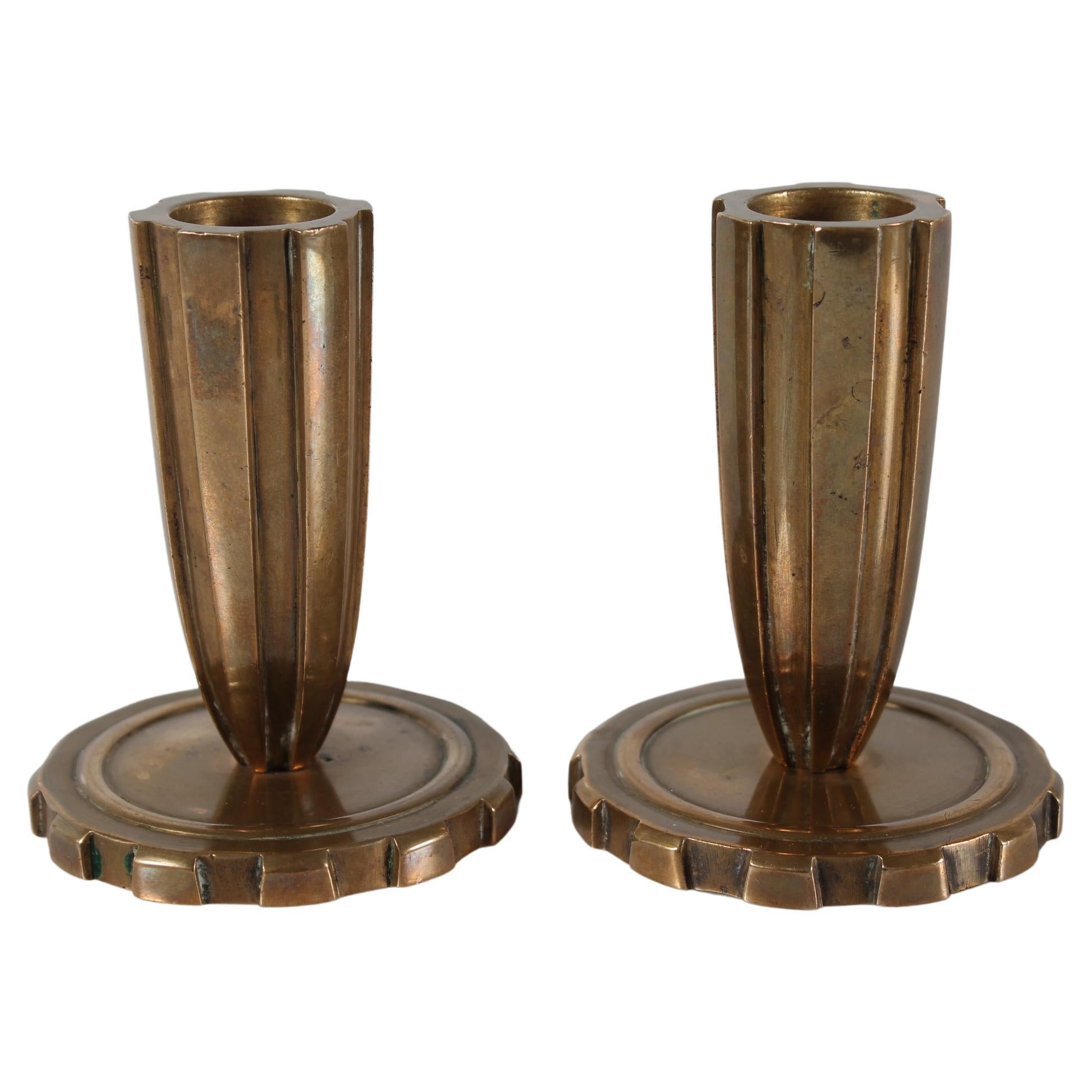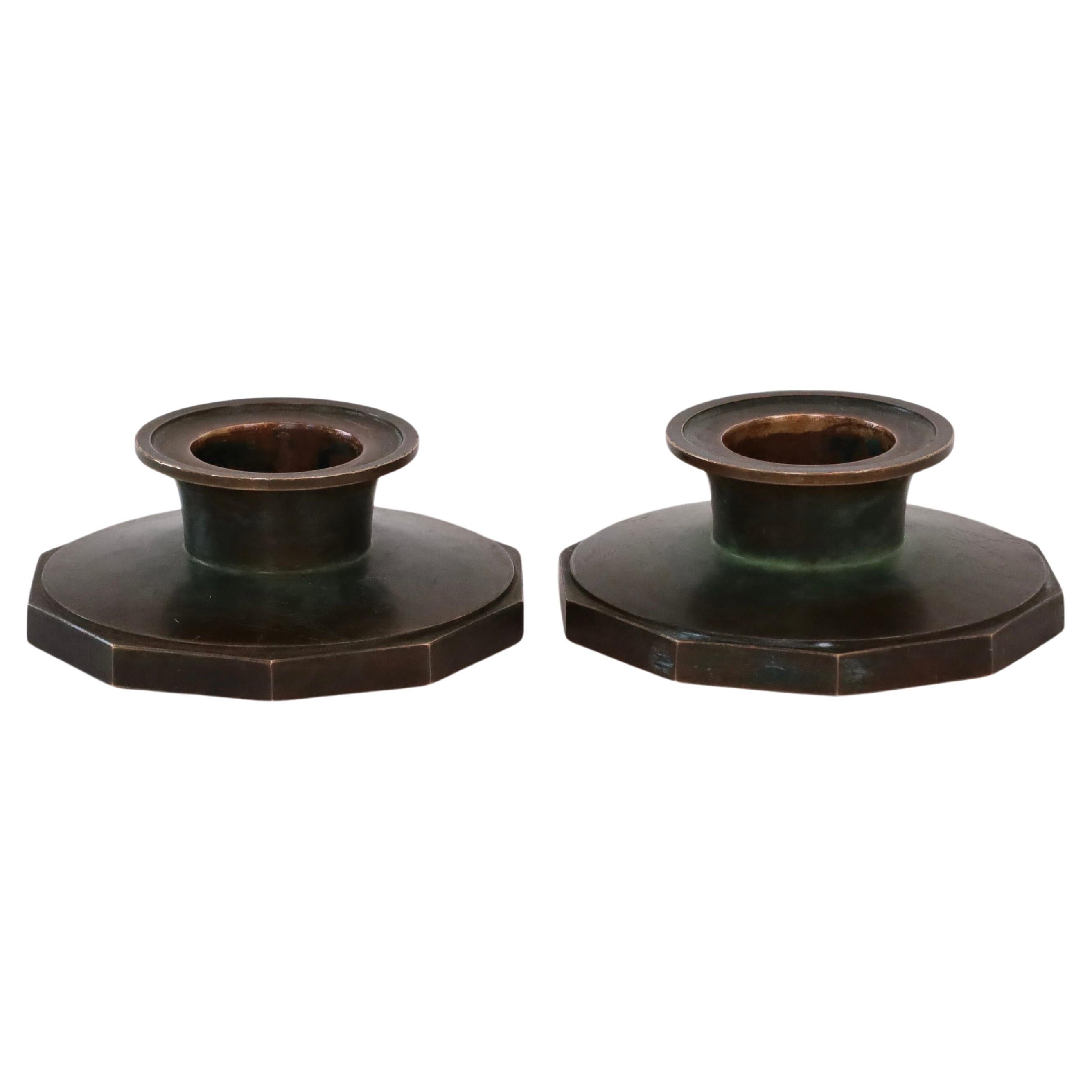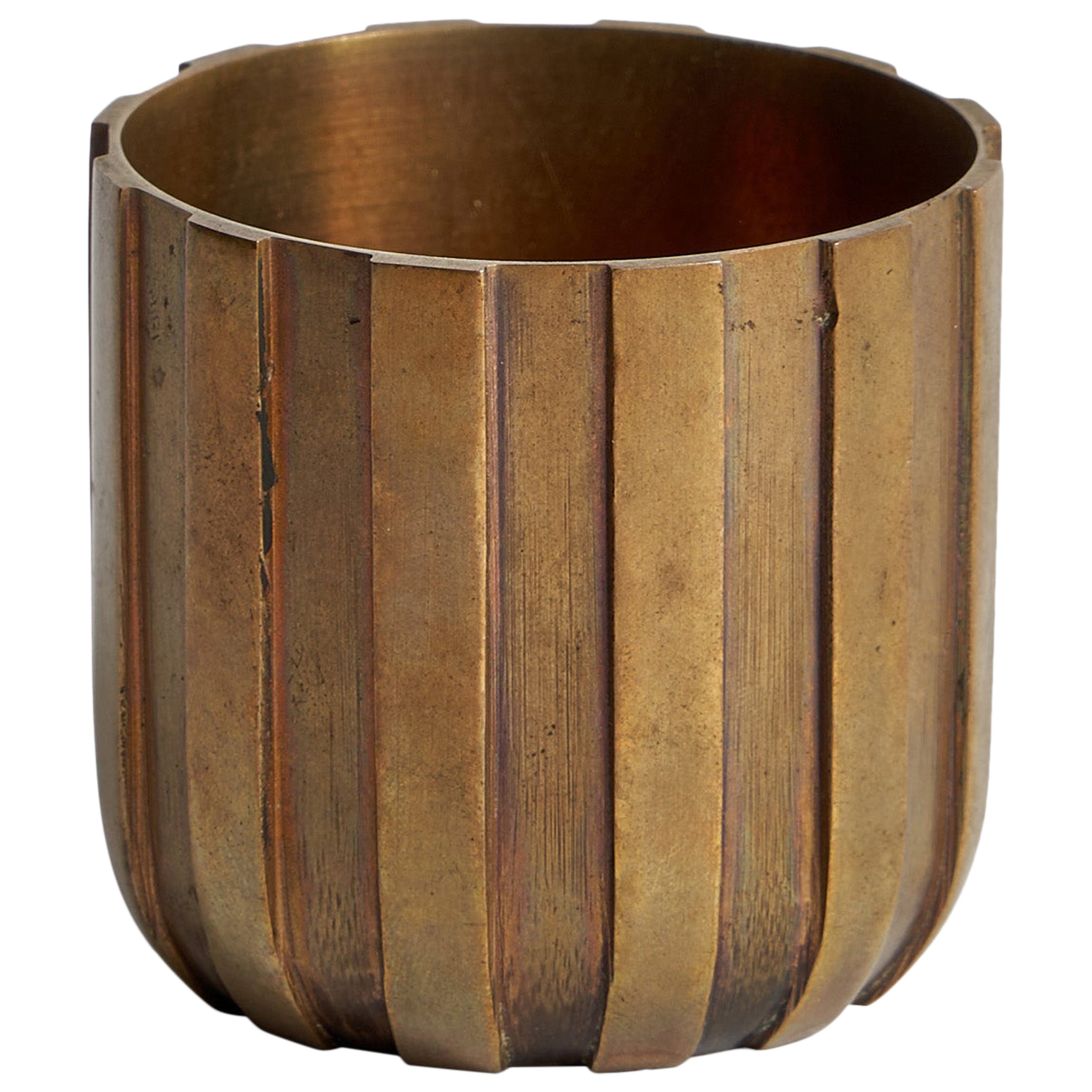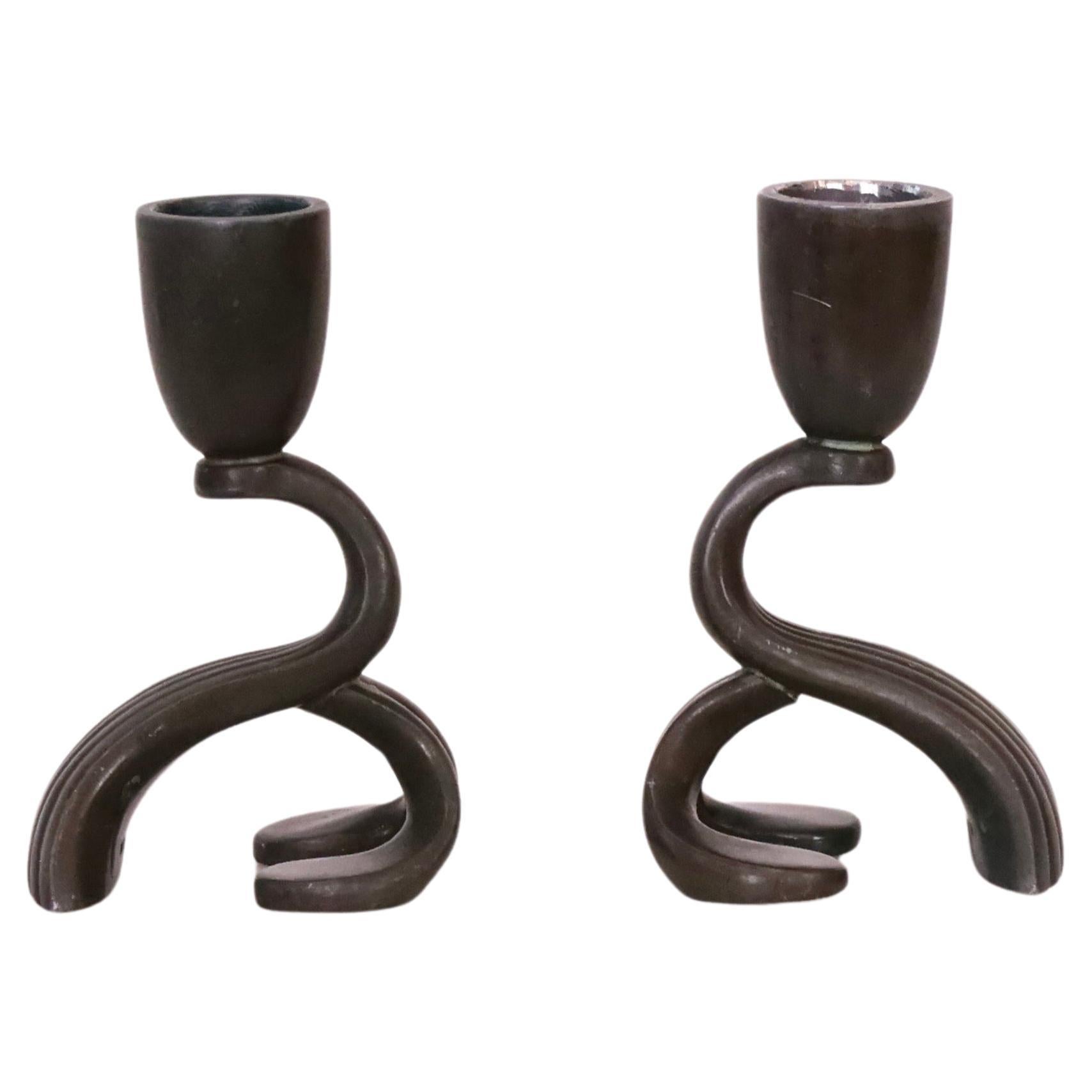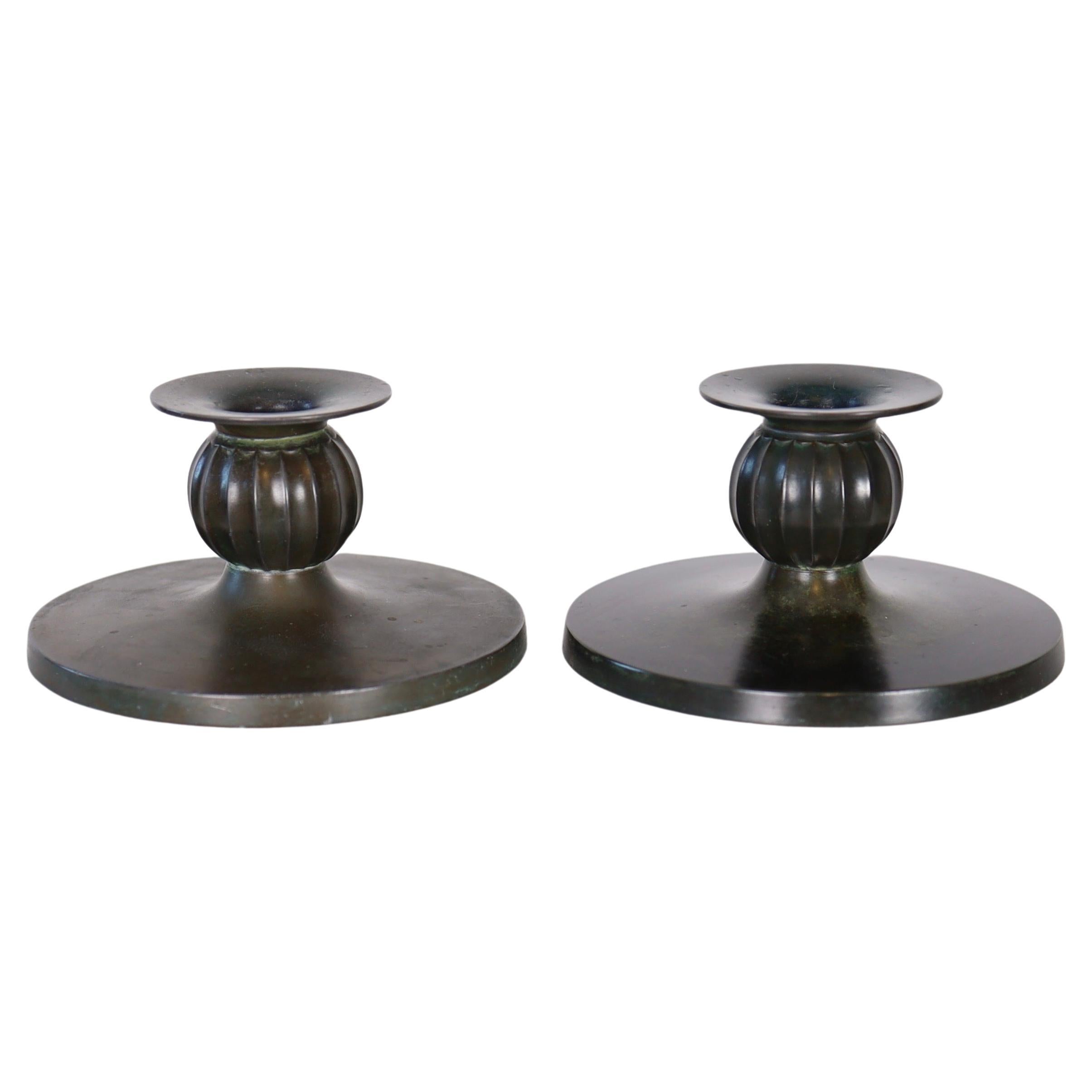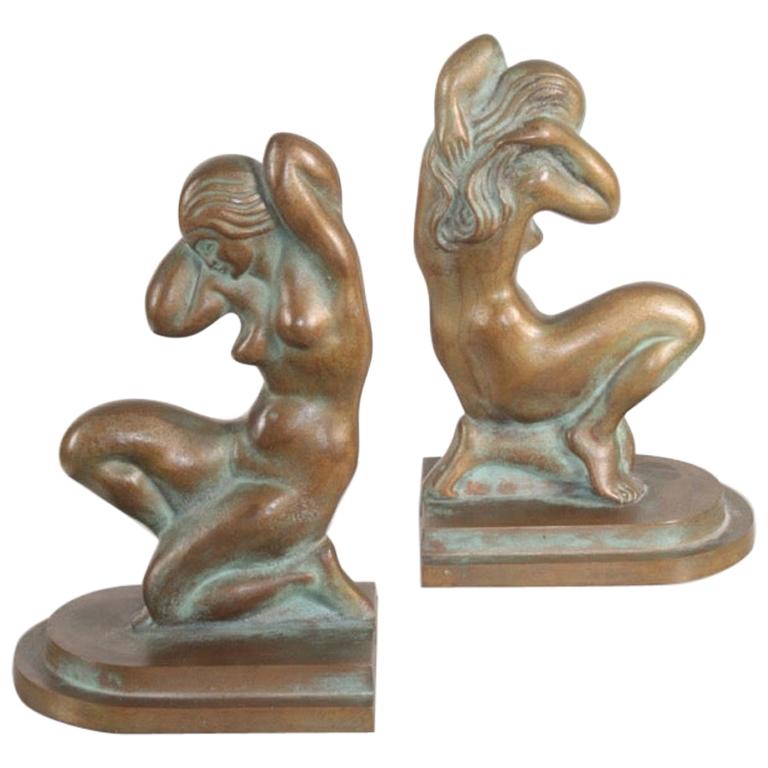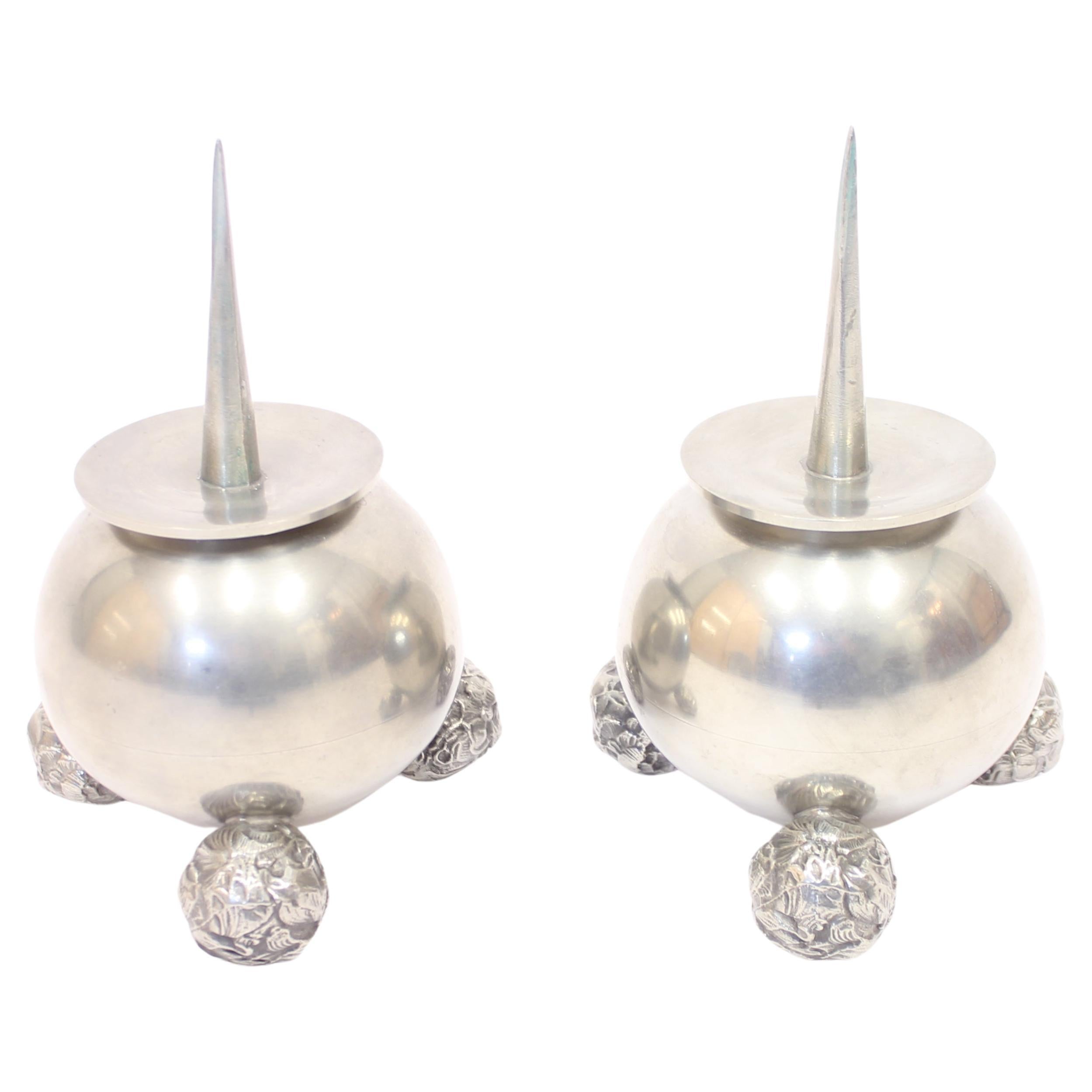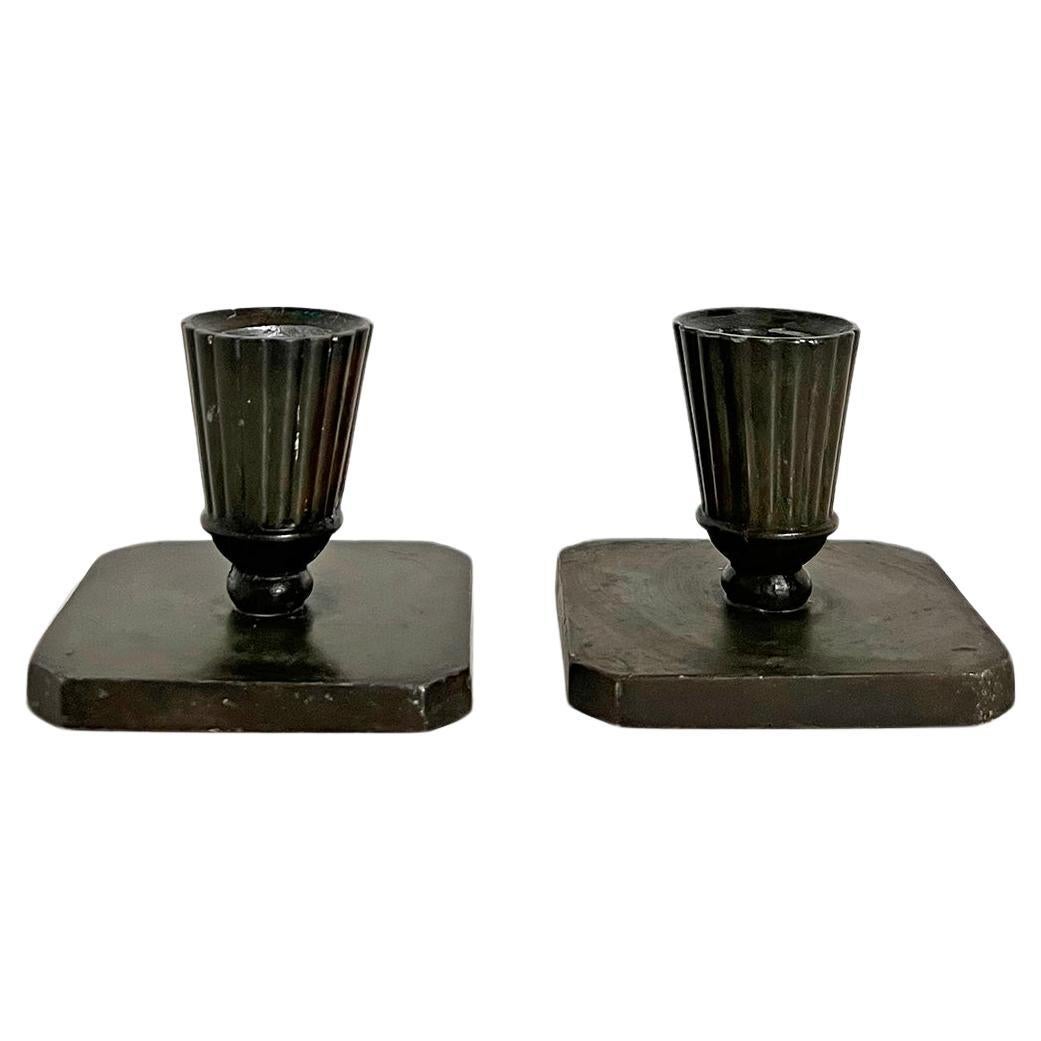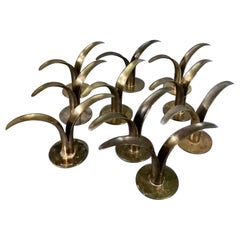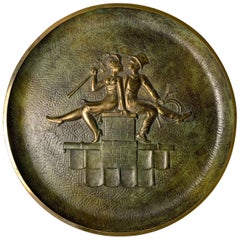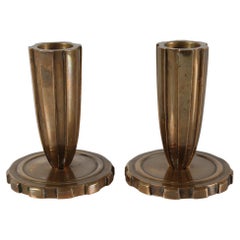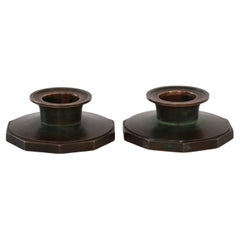
Pair of Tinos Bronze Candle Holders Denmark, 1930s
View Similar Items
Want more images or videos?
Request additional images or videos from the seller
1 of 5
Pair of Tinos Bronze Candle Holders Denmark, 1930s
About the Item
- Creator:Tinos (Maker)
- Dimensions:Height: 3.55 in (9 cm)Diameter: 3.15 in (8 cm)
- Sold As:Set of 2
- Style:Scandinavian Modern (Of the Period)
- Materials and Techniques:
- Place of Origin:
- Period:
- Date of Manufacture:1930s
- Condition:Wear consistent with age and use.
- Seller Location:Valby, DK
- Reference Number:1stDibs: LU6559234314652
About the Seller
5.0
Vetted Seller
These experienced sellers undergo a comprehensive evaluation by our team of in-house experts.
1stDibs seller since 2022
25 sales on 1stDibs
More From This SellerView All
- Pair of Thorvald Bindesbøll Candle Sticks for P Ipsens Enke, Denmark 1900’sBy Thorvald Bindesbøll, P. Ipsens EnkeLocated in Valby, 84Own a piece of Danish design history with this exceptional pair of candlesticks crafted by the renowned artist Thorvald Bindesbøll for P. Ipsens Enke in the early 1900s. These rare c...Category
Antique Early 1900s Danish Arts and Crafts Candlesticks
MaterialsCeramic
- Set of 10 lily candle holders designed by Ivar Ålenius Björk for Ystad MetalBy Ystad-Metall, Ivar Ålenius BjörkLocated in Valby, 84Rare set of 10 lily candle holders in patinaed brass designed by Ivar Ålenius Björk for Ystad Metal. The candle holders are in good original condi...Category
Vintage 1950s Swedish Scandinavian Modern More Candle Holders
MaterialsBrass
$3,864 / setFree Shipping - Set of four sculptural art deco candle sticks Denmark 1960'sLocated in Valby, 84Set of four sculptural art deco candle sticks in cast iron made in Denmark by a danish craftsman in the 1960's. The candle sticks fit regular si...Category
Vintage 1960s Danish Art Deco Candlesticks
MaterialsIron
- Evan Jensen Bronze Vase, Denmark, 1930sBy Evan JensenLocated in Valby, 84Evan Jensen bronze art deco vase made by Danish artist Evan Jensen in the 1930s. The vase is in a beautiful original condition and is signed Evan Jensen København Bronze and has model number 155A. The vase is a beautiful decorative element to any interior and the structure of the vase is fantastic with lots of details which will give you endless hours of enjoyment looking at. Art Deco, short for the French Arts Décoratifs, and sometimes just called Deco, is a style of visual arts, architecture, and product design, that first appeared in France in the 1910s (just before World War I), and flourished in the United States and Europe during the 1920s and 1930s. Through styling and design of the exterior and interior of anything from large structures to small objects, including how people look (clothing, fashion and jewelry), Art Deco has influenced bridges, buildings (from skyscrapers to cinemas), ships...Category
Vintage 1930s Danish Scandinavian Modern Vases
MaterialsBronze
- Evan Jensen Bronze Dish, Denmark, 1930sBy Evan JensenLocated in Valby, 84Bronze Art deco dish/charger by Danish artist Evan Jensen from the 1930's in a beautiful original condition, the dish is signed Evan Jensen Copenhagen Bronze and has model number 320. The dish has a very decorative image of a deer on the front. The dish is the perfect dish to have standing as a piece of art but can also be used as a bowl to store stuff like fruit or nuts or whatever else you could think of. Art Deco, short for the French Arts Décoratifs, and sometimes just called Deco, is a style of visual arts, architecture, and product design, that first appeared in France in the 1910s (just before World War I), and flourished in the United States and Europe during the 1920s and 1930s. Through styling and design of the exterior and interior of anything from large structures to small objects, including how people look (clothing, fashion and jewelry), Art Deco has influenced bridges, buildings (from skyscrapers to cinemas), ships, ocean liners, trains, cars, trucks, buses, furniture, and everyday objects like radios and vacuum cleaners. It got its name after the 1925 Exposition internationale des arts décoratifs et industriels modernes (International Exhibition of Modern Decorative and Industrial Arts) held in Paris. Art Deco combined modern styles with fine craftsmanship and rich materials. During its heyday, it represented luxury, glamour, exuberance, and faith in social and technological progress. From its outset, Art Deco was influenced by the bold geometric forms of Cubism and the Vienna Secession; the bright colours of Fauvism and of the Ballets Russes; the updated craftsmanship of the furniture of the eras of Louis XVI and Louis Philippe I; and the exoticized styles of China, Japan, India, Persia, ancient Egypt and Maya art. It featured rare and expensive materials, such as ebony and ivory, and exquisite craftsmanship. The Empire State Building, Chrysler Building, and other skyscrapers of New York City built during the 1920s and 1930s are monuments to the style. In the 1930s, during the Great Depression, Art Deco became more subdued. New materials arrived, including chrome plating, stainless steel and plastic. A sleeker form of the style, called Streamline Moderne, appeared in the 1930s, featuring curving forms and smooth, polished surfaces. Art Deco is one of the first truly international styles, but its dominance ended with the beginning of World War II and the rise of the strictly functional and unadorned styles of modern architecture and the International Style of architecture that followed. This dish is the perfect detail for any interior from the modern Wabi Sabi style...Category
Vintage 1930s Danish Scandinavian Modern Decorative Dishes and Vide-Poche
MaterialsBronze
- Evan Jensen Bronze Vase, Denmark, 1930sBy Evan JensenLocated in Valby, 84Rare bronze vase attributed Evan Jensen made in Denmark in the 1930s. The vase is made by a unknown danish caster called Antika but is a typical Evan Jensen shaped vase and has typical Evan Jensen detail. The vase is in good condition with a beautiful original patina. Art Deco, short for the French Arts Décoratifs, and sometimes just called Deco, is a style of visual arts, architecture, and product design, that first appeared in France in the 1910s (just before World War I), and flourished in the United States and Europe during the 1920s and 1930s. Through styling and design of the exterior and interior of anything from large structures to small objects, including how people look (clothing, fashion and jewelry), Art Deco has influenced bridges, buildings (from skyscrapers to cinemas), ships, ocean liners, trains, cars, trucks, buses, furniture, and everyday objects like radios and vacuum cleaners. It got its name after the 1925 Exposition internationale des arts décoratifs et industriels modernes (International Exhibition of Modern Decorative and Industrial Arts) held in Paris. Art Deco combined modern styles with fine craftsmanship and rich materials. During its heyday, it represented luxury, glamour, exuberance, and faith in social and technological progress. From its outset, Art Deco was influenced by the bold geometric forms of Cubism and the Vienna Secession; the bright colours of Fauvism and of the Ballets Russes; the updated craftsmanship of the furniture of the eras of Louis XVI and Louis Philippe I; and the exoticized styles of China, Japan, India, Persia, ancient Egypt and Maya art. It featured rare and expensive materials, such as ebony and ivory, and exquisite craftsmanship. The Empire State Building, Chrysler Building, and other skyscrapers of New York City built during the 1920s and 1930s are monuments to the style. In the 1930s, during the Great Depression, Art Deco became more subdued. New materials arrived, including chrome plating, stainless steel and plastic. A sleeker form of the style, called Streamline Moderne, appeared in the 1930s, featuring curving forms and smooth, polished surfaces. Art Deco is one of the first truly international styles, but its dominance ended with the beginning of World War II and the rise of the strictly functional and unadorned styles of modern architecture and the International Style of architecture that followed. This vase is the perfect detail for any interior from the modern Wabi Sabi style...Category
Vintage 1920s Danish Scandinavian Modern Vases
MaterialsBronze
You May Also Like
- Tinos Bronze, Denmark, 1930sBy TinosLocated in Chicago, ILTinos bronze, Denmark, 1930s.Category
Early 20th Century Danish Art Deco Figurative Sculptures
MaterialsBronze
- Pair of Danish Art Deco Bronze Tino Candlesticks in Fluted style Denmark 1930-50By TinosLocated in Aarhus C, DKA pair of Danish Art Deco Tino candlesticks made of solid bronze in fluted style Designed and made in Denmark 1930-1950. Very nice used condition with good patina.Category
Vintage 1940s Danish Art Deco Candlesticks
MaterialsBronze
- Set of Just Andersen bronze candle holders, 1930s, DenmarkBy Just AndersenLocated in Værløse, DKA set of subtile bronze candle holders designed by Just Andersen in 1934. * A set of small 10-sided bronze candle holders * Designer: Just Andersen * Manufacturer: Just Andersen * ...Category
Vintage 1930s Danish Art Deco Candlesticks
MaterialsBronze
- Pair of Light Bronze Candle Holders by Just Andersen, 1930s, DenmarkBy Just AndersenLocated in Værløse, DKA remarkable pair of bronze candlestick holders designed by the renowned artist Just Andersen in the 1930s. These exquisite candlestick holders, model LB 1941, are a testament to And...Category
Vintage 1930s Danish Candelabras
MaterialsBronze
- Tinos, Small Bowl, Bronze, Denmark, 1930sBy TinosLocated in High Point, NCA small bronze bowl designed and produced by Tinos, Denmark, c. 1930s.Category
Vintage 1930s Danish Scandinavian Modern Decorative Bowls
MaterialsBronze
- Tinos, Small Vase, Bronze, Denmark, 1930sBy TinosLocated in High Point, NCA small bronze bowl designed and produced by Tinos, Denmark, 1930s.Category
Vintage 1930s Swedish Scandinavian Modern Vases
MaterialsBronze
Recently Viewed
View AllMore Ways To Browse
Streamline Train
Brass Cathedral Candlesticks
Foo Dog Candlestick
Floor Candle Sticks
Italian Gilt Wood Altar Sticks
Wmf Candleholder
Brass Gothic Church Altar Candlesticks
Tiffany And Co First Product
Metal Deer Candle Holders
Pair Carved Cathedral Candle
Cast Iron Candle Stands Antique
Glass Ice Cube Candle Holders
Halston 2021
Tiffany And Co Barcelona
Tiffany And Co Manchester
Candlesticks Louis Seize
Iron Floor Candle Sticks
Tiffany And Co Chinese New Year

